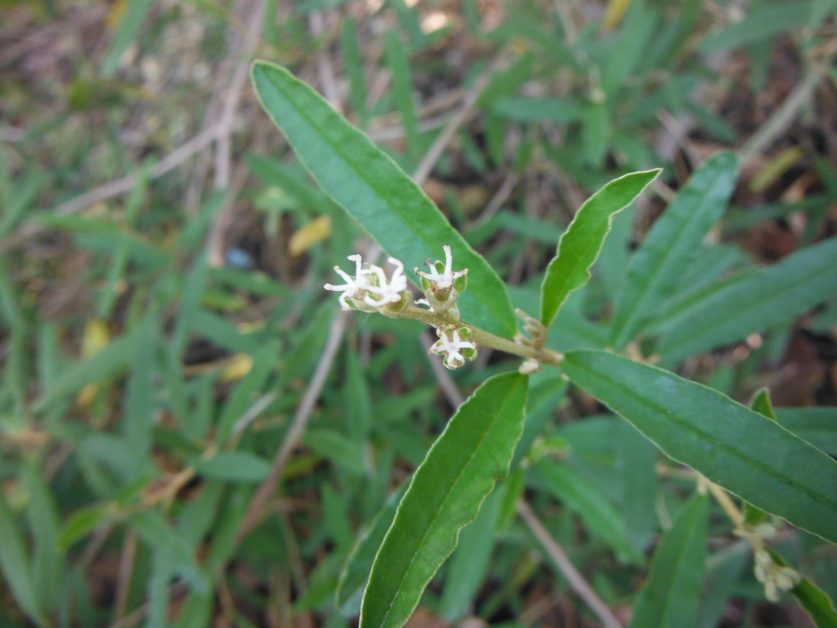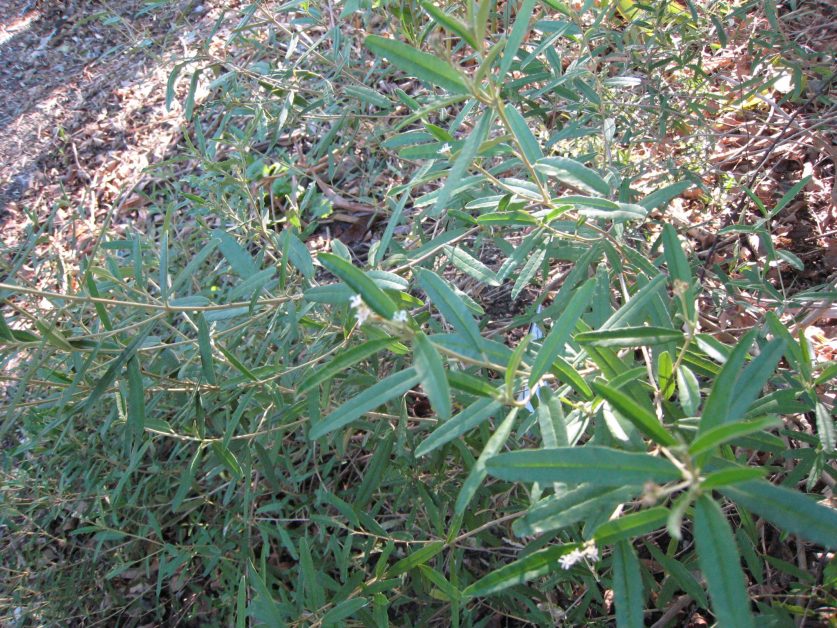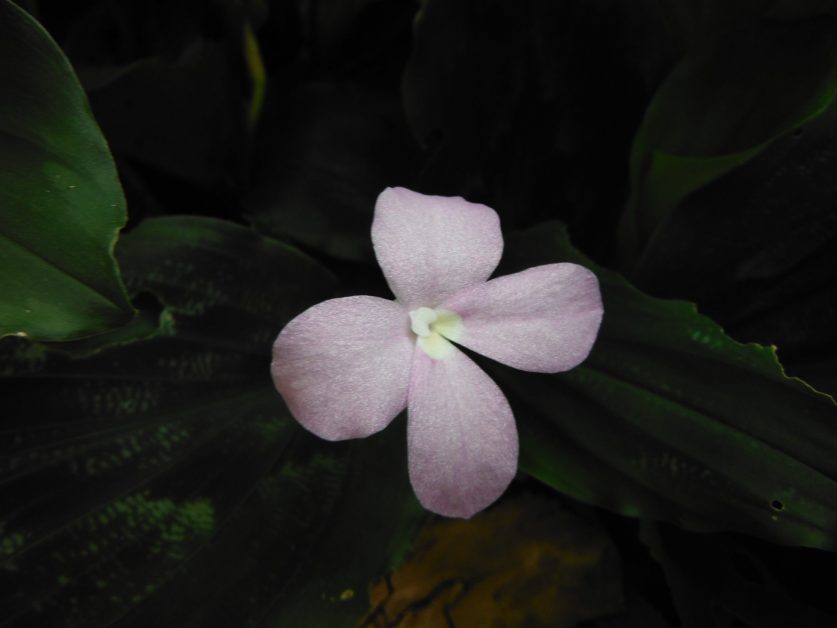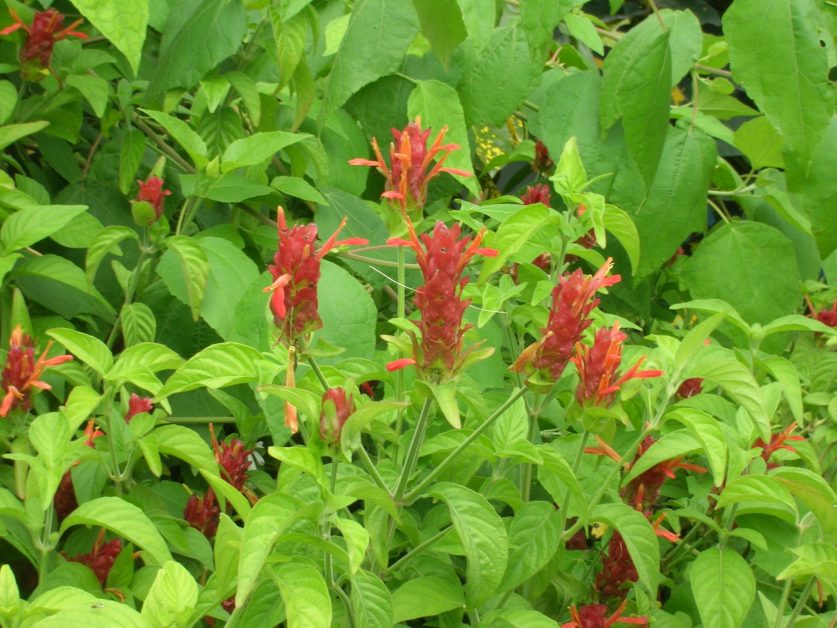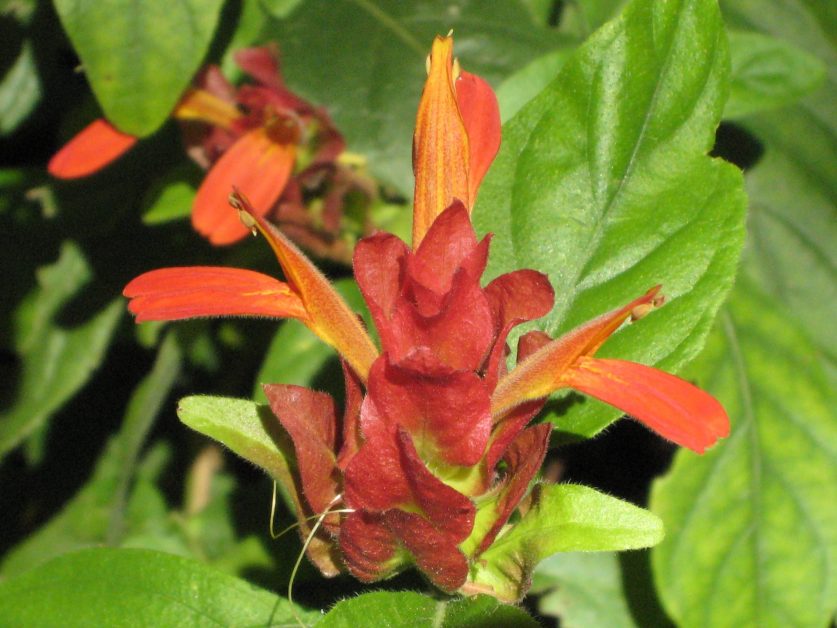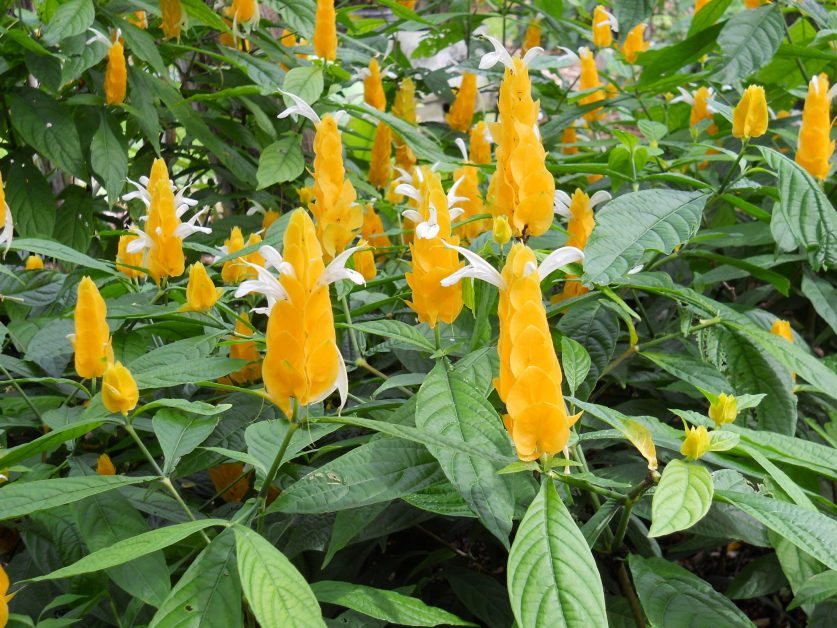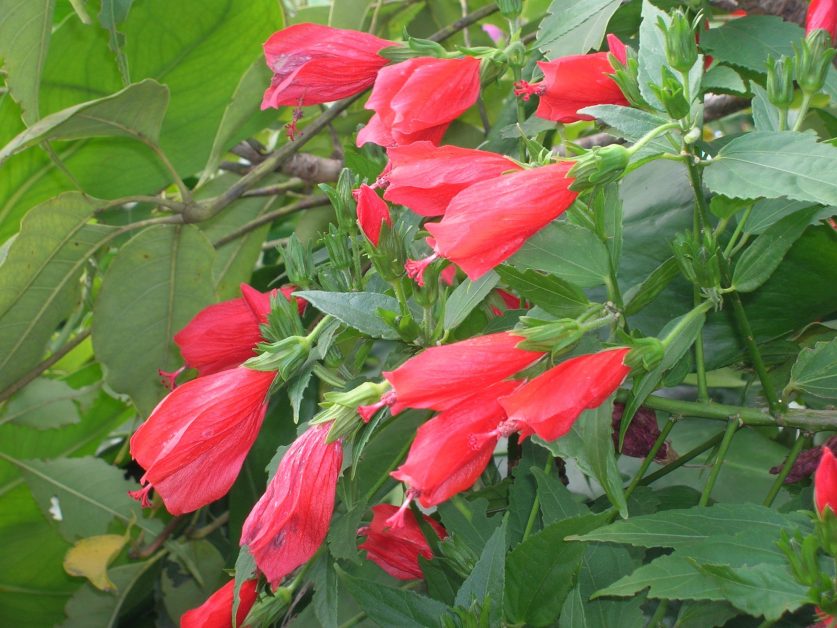Ground Covers That You May Not Have Thought About, Part V
Richard Lyons’ Nursery today presents the fifth installment of its survey of plants that are sometimes overlooked for their potential as ground covers.
Native Pineland Croton, Croton linearis: This evergreen shrub is native from St. Lucie County south through the Florida peninsula and into the Bahamas, Cuba and Jamaica. Several butterfly species are attracted to the nectar of the plant’s small white flowers. More importantly, the Pineland Croton is the only known larval host in Florida for the Bartram’s Scrub-Hairstreak and Florida Leafwing butterflies. Croton linearis grows in the 1-3 ft. range and features narrow leaves which are dark green on top and silvery or coppery underneath. Not particular about soil types, it doesn’t need supplemental irrigation once established in the ground.
Peacock Ginger, Kaempferia pulchra: If you’re looking for a ground cover for a moist, shaded area, the Peacock Ginger may be the solution, especially if you like the Hostas grown in northern states. They produce four-petaled flowers in the lavender-white range throughout the summer, but also feature beautifully-patterned foliage that attracts a lot of attention itself. The oval leaves consist of a green background with an overlay of striking bronze or purple markings. They fill up the target area by spreading via rhizomes. Kaempferia goes dormant during cooler months, during which irrigation should be reduced, but reappears during the spring.
Mexican Shrimp Plant, Justicia brandegeana: This is a very colorful plant, not for its flowers, but for its bold overlapping bracts that attain a shrimp-like shape. Native to Mexico, it grows about 3 ft. tall. Though the flowers are nondescript, they do attract butterflies and hummingbirds. The stems and undersides of leaves are downy, especially when young. When used as a ground cover, J. brandegeeana can be kept more compact by pinching back the tips from time to time, and then pruning hard in the spring. Grow in full sun to light shade. The Mexican Shrimp Plant is not only drought-tolerant once established, but also easy to maintain otherwise.
Yellow Shrimp Plant, Pachystachys lutea: Here’s an example of confusion created by using a similar common name to describe plants of different species. The bracts of this Shrimp Plant don’t even take on the characteristic curved shape, but are instead more candle-like. Why it wasn’t called the Yellow Candle Plant instead is a mystery whose resolution is far beyond the pay scale of the experts at Richard Lyons’ Nursery. Native to Central America, this species grows much like the Mexican Shrimp Plant and is likewise capable of being pruned hard to shape as a ground cover.
Turk’s Cap, Malvaviscus arboreus var. mexicanus: Though capable of growing into a moderate-sized shrub, Turk’s Cap is also amenable — through judicious pruning — to being maintained as a ground cover. It produces bright red, pendulous flowers which call to mind less-than-fully unfurled blooms of hibiscus, to which it is, in fact, related. This plant is a bird and butterfly attractant. For best results, plant in a well-drained site, in full sun to light shade, and provide regular watering. Conduct pruning operations during the cooler months of the year.
- Croton linearis (Pineland Croton)
- Croton linearis (Pineland Croton)
- Kaempferia pulchra (Peacock Ginger)
- Kaempferia pulchra (Peacock Ginger)
- Justicia brandegeana (Red Shrimp Plant)
- Justicia brandegeana (Red Shrimp Plant)
- Pachystachys lutea (Shrimp Plant)
- Pachystachys lutea (Shrimp Plant)
- Malvaviscus arboreus var. mexicanus (Turks Cap)
- Malvaviscus arboreus var. mexicanus (Turks Cap)
